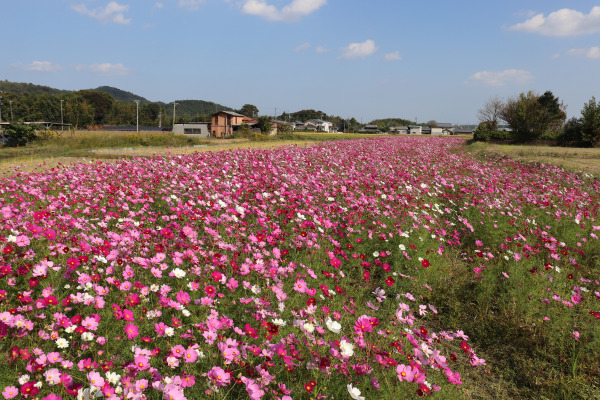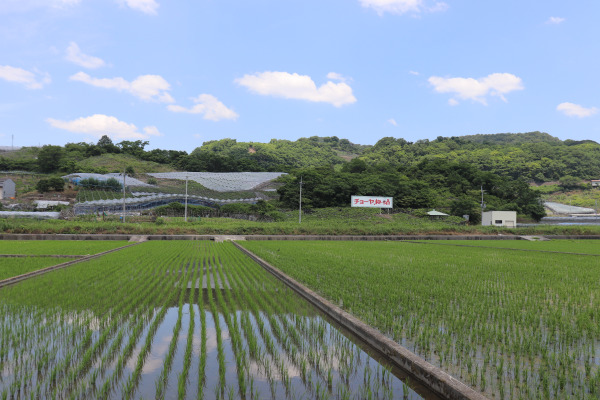Ise Kaido and Ise Honkaido: the Scared Pirglimage to Ise
During the Edo Period, many “kaido” or historic roads were built and those roads were used by commoners to travel around the country. Two o the most important roads construte at this time were the Ise Honkaido and the Ise Kaido. Each of these roads provided a crucial function–they brought pilgrims to Ise. For many people, the most coveted destination was none other than the most scared place in Japan: Ise Jingu Shrine.
The Ise Pilgrimage
Going on the Ise Pilgrimage was a lifelong dream for commoners of the Edo Period. The desire even became a famous phrase:
『伊勢に行きたい。伊勢路が見たい。一生に一度でも。』
“I want to go to Ise. I want to see the Ise Kaido. Just once in my lifetime“,
In the Edo Period, people were not able to freely travel across the country. But pilgrims on the Ise Pilgrimage were able to go just about anywhere they liked! Unfortunately, people since peope were poor and unable to afford the journey by themseles they would often form groups called “ko”. These ko would raise money and then hold a lottery within the group. The winner of the lottery would then go on the pilgrimage on everyone’s behalf.

At this time, going on the Ise Pilgrimage was a sort of fad. As many as one in six people in the entire country, regardless of class, visited Ise Jingu Shrine.
Today the ancient roads they once walked on are no longer popular, since really– who walks to Ise these days*. However, these roads do indeed still exist and while some elements have changed over the centuries, every now and then you encounter untouched bits of Japan’s past.
The Road to Ise
Ise Honkaido
The Ise Honkaido is a historic route from Osaka to Ise Jingu Shrine. Prince Yamato allegedly walked this road in search of the proper place to enshrine the goddess, Amaterasu, the main deity in Ise Jingu Shrine.
From Osaka to Haibara in Nara, the Ise Honkaido mainly goes through the open, flat fields and has plenty of historic things to see. However, after Haibara limited public transportation is extremely limited as the trail goes deep in the mountains along National Route 369. The trail is very good for hiking, though.
| 伊勢本街道 | |||
| Section | distance | Major Places to see | |
| 1 | Tamatsukuri Shrine (Osaka) – Hiraoka Shrine (Higashi Osaka) | Higashi-osaka Rugby Stadium, Matsubara Post Town, Hiraoka Shrine | |
| 2 | Hiroka Shrine (Higashi Osaka) – Minami Ikoma (Ikoma, Nara) | Kuragari Pass, Nishihata Terrace Rice Field | |
| 3 | Minami Ikoma (Ikoma, Nara) – Kofukuji Temple (Nara) | Muronoki Pass, Heijokyo Palace Park, Sajyo Street | |
| 4 | Kofukuji Temple (Nara) – Tenri (Tenri, Nara) | Naramachi, Obitoki Temple | |
| 5 | Tenri (Tenri, Nara) – Sakurai (Sakurai, Nara) | Oyamato Shrine, Hashihaka Tumulus, Omiwa Shrine | |
| 6 | Sakurai (Sakurai, Nara) – Hasedera Temple (Sakurai, Nara) | Hasedera Temple (Same route as Tokai Nature Trail) | |
| 7 | Hasedera Temple (Sakurai, Nara ) – Haibara (Uda, Nara) | Haibara Post Town (Same route as Hase Kaido) | |
| 8 | Haibara (Uda, Nara) – Yamakasu (Soni, Nara) | Sumisaka Shrine, Takai Cedar Tree, Ishiwari Pass | |
| 9 | Yamakasu (Soni, Nara) – Ise Okitsu (Tsu, Mie) | Mitsue Shrine, Mitake Cherry Blossoms, Okitsu Post Town | |
| 10 | Ise Okitsu (Tsu, Mie)- Yokono (Matsusaka, Mie) | Kamitage Post Town, Kitabatake Shrine, Hissaka Pass | |
| 11 | Yokono (Matsusaka, Mie) – Taki (Taki, Mie) | Kahada Gorge, Tsuru River Cross, Oka Post Town | |
| 12 | Taki (Taki, Mie) – Geku (Ise, Mie) | Tamaru Castle | |
Ise Honkaido: Picture Gallery






Ise Kaido
The Ise Kaido forks off from the Tokaido at Yokkaichi City in Mie Prefecture and leads to the Geku of Ise Jingu Shrine through Suzuka, Tsu, and Matsusaka along the Kintetsu railway. This route was used mainly by the people from East Japan to go to Ise Jingu Shrine.
The Ise Kaido goes through many small cities, so it doesn’t always feel like you are hiking an ancient road. However, the original small road still exists in the many parts of the trail. There are not only many historic things along the way, such as shrines and temples but also, a few restaurants where pilgrims dined.
| Ise Kaido | |||
| 1 | Yokkaichi to Suzuka |
| |
| 2 | Suzuka to Tsu | Ise Ueno Castle, Tsu Kannon Temple | |
| 3 | Tsu to Matsusaka | Historic District of Matusaka | |
| 4 | Matsusaka to Geku |
| |
Hase Kaido
The Hase Kaido, commonly called Aogoe Ise Kaido, is the road from Hase-dera Temple in Nara to Matsusaka in Mie Prefecture via Nabari and the Aoyama Pass along the Kintetsu Osaka Line. Because the trail goes through a less mountainous area than Ise Honkaido, it is often used by people in West Japan to Ise Jingu Shrine. After Matsusaka, it connects to the Ise Kaido.
It is also quite a historic road, used by Emperor Temmu during the Jinshin War and shrine maidens called Saio, who were specifically devoted to serving to Ise Jingu Shrine.
| Hase Kaido (Aogoe Ise Kaido) | |||
| 1 | Hasedera to Haibara | Haibara Post Town | |
| 2 | Haibara to Nabari |
| |
| 3 | Nabari to Iga |
| |
| 4 | Iga to Sakakibara Onsen |
| |
| 5 | Sakibara Onsen to Matsusaka |
| |
Other Roads to Ise
Furuichi Sangu Kaido
The Furuichi Kaido is a short historic road that connects Geku and Naiku of Ise Jingu Shrine. While it entirely goes through the neighborhood of Furuichi, which used to be a huge red district of pilgrimages, now there are few historic things left to indicate so. I think walling this road can be a great way to enjoy the traditional way of Ise pilgrimage.
| Furuichi Kaido | |||
| 1 | Geku to Naiku | Sarutahiko Shrine, Oharaimachi | |
Furuichi Kaido: Picture Gallery



Ise Betsu-Kaido
The Ise Betsu Kaido forks from Tokaido in Seki in Mie prefecture and then merges with Ise kaido at Tsu City. This road was mainly used by pilgrimages from Kyoto as a shortcut to Ise.
This also goes thorough the city area, but the small, narrow road and old post towns along the way still does exist as it what it used to be.
| Ise Betsu Kaido | |||
| 1 | Seki (Kameyama, Mie) to Tsu (Tsu, Mie) |
| |
Takenouchi Kaido and Yokooji
The Takenouchi Kaido and Yokooji, date to the Asuka Period (7th century) and are the oldest national roads in Japan. These roads were once primary by government officials and foreign personnel commuting between Sakai in Osaka and Sakurai in Nara. However, later in the Edo Period, it was commonly used as a road to go to Ise. For this reason, this road has many interesting things such as Kofun, ancient burial mounds for Japan’s kings (Yes! Japan once had kings.)
In Sakurai, it merges with Ise Honkaido.
| Takenouchi Kaido and Yokooji | |||
| 1 | Sakai (Sakai, Osaka) – Furuichi (Habikino, Osaka) | Mozu Furuichi Tumulus | |
| 2 | Furuichi(Habikino, Osaka)- Nagao Shrine (Katsuragi, Nara) | Takenouchi Pass, Taimadera Temple
| |
| 3 | Nagao Shrine (Katsuragi, Nara) to Sakurai (Sakurai, Nara) | Yamato Sanzan, Imaicho Historic District | |
Takenouchi Kaido and Yokooji: Picture Gallery







Leave a Reply